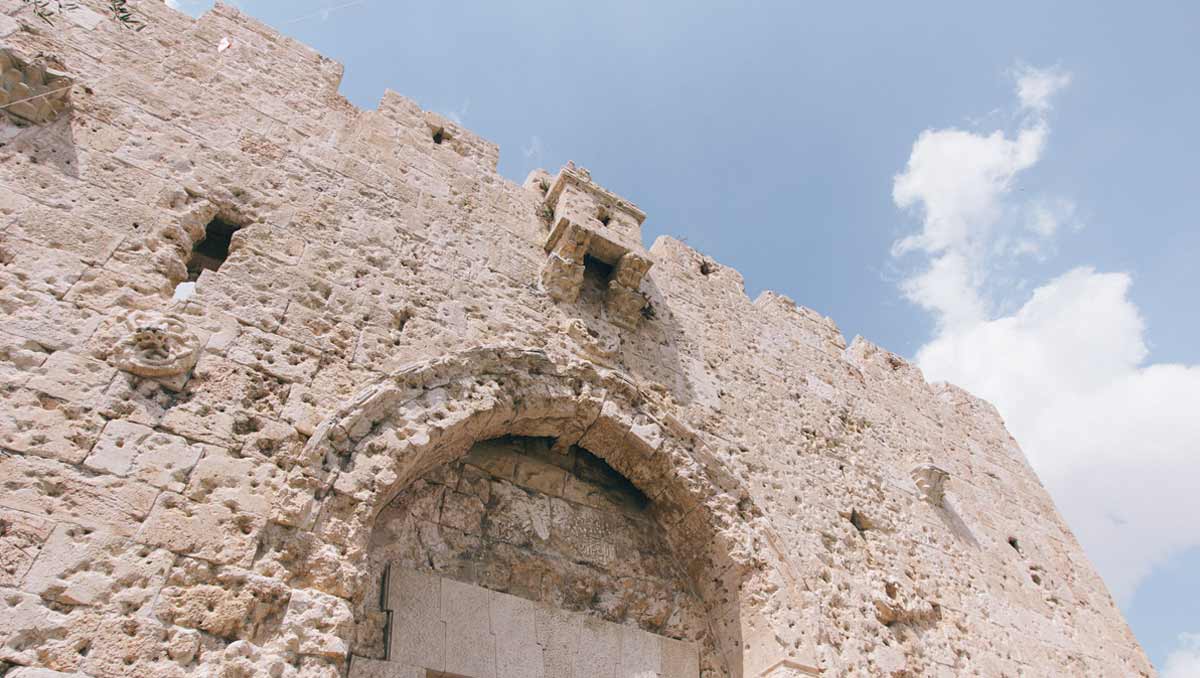
Four Criteria the Messiah Must Fulfill
by Jews for Jesus | July 01 2000
So what’s the deal with the Messiah? For many, the Messiah figure seems like an ancient Jewish version of Superman—a childhood hero on whom most of us have long since given up. But according to the Talmud and the Jewish Scriptures, the Messiah is not only real, but should have arrived a long time ago.
Maybe a Messiah who never comes is not such a big deal, but a God who breaks His promises is a very big deal. The detailed messianic timetable in Daniel 9 allows us to explore solutions to these questions. Not only is there much more to be known about the Messiah, but we can know exactly when to expect him!
Fact One: The Messiah Would Arrive in a Certain Time Frame
The details of when Messiah will arrive are written in the book of Daniel. This prophet lived during the time of our exile in Babylon and received a vision that the Messiah would come 483 years after the command to restore Jerusalem and rebuild the Temple.
From the issuing of the decree to restore and rebuild Jerusalem until an Anointed One [ad mashiach], the ruler [nagid], will be seven weeks and sixty-two weeks. It will be rebuilt with a plaza and a moat, but in difficult times. (Daniel 9:25 CBS)
The “clock” on these 69 “weeks” (units of seven years) began ticking when Artaxerxes issued a decree to Nehemiah to rebuild the Temple and restore Jerusalem (Nehemiah 2:1–8). While other decrees went out, this was the only one that involved both the Temple and Jerusalem. History records this took place in Nisan (March/April) of 444 BC. That would mean the Messiah would appear by AD 33. History does not record anyone, other than Yeshua (Jesus), who was from that time period and claimed to be the Messiah.
Fact Two: The Messiah Would Come Before the Destruction of the Second Temple
Daniel predicted that after the appearance of Messiah, “the people of a prince that shall come shall destroy the city and the sanctuary” (Daniel 9:26 JPS). We know that occurred when Titus’ Roman legions marched on Jerusalem in AD 70, destroying both the city and the Temple. The Talmud teaches that at that time, people believed that the time of Messiah had already come, but because of the sins of the nation the messianic kingdom was withheld at the time it should have arrived.
The school of Eliyahu taught: Six thousand years is the duration of the world. Two thousand of the six thousand years are characterized by chaos; two thousand years are characterized by Torah, from the era of the Patriarchs until the end of the mishnaic period; and two thousand years are the period of the coming of the Messiah. That is the course that history was to take, but due to our sins, that time frame increased. The Messiah did not come after four thousand years passed, and furthermore, the years that elapsed since then, which were to have been the messianic era, have elapsed (Sanhedrin 97a and b, emphasis added).
Other passages support the understanding that the Messiah would come while the Temple was still standing. The psalm is one of the Hallel Psalms which praises God for His deliverance of Israel and of Israel’s leader, the king. Israel was rejected by its enemies, as was its king.
Hoshienu—Save now, I pray, O Lord; O Lord, I pray, send now prosperity. Blessed is he who comes in the name of the Lord! We have blessed you from the house of the Lord. (vv. 25–26, emphasis added)
The only way that they could bless the Messiah from the house of the Lord was if the Temple was still standing! Ironically, these are the same words the Jewish people used to greet Yeshua when he rode into Jerusalem the week before Passover (Matthew 21:9–12).
Haggai, who was in Jerusalem as the Second Temple was being built, made the messianic prediction that the “glory of this last temple is to be greater than that of the first” (2:9).1 And Malachi confirmed it: “Then suddenly the Lord you are seeking will come to his Temple; the messenger of the covenant, whom you desire, will come” (3:1). Twelfth century Jewish scholar, Rabbi David Kimchi (also known as Radak), equated Malachi’s messenger of the covenant with the Messiah.2
According to Daniel, the Temple would not only be standing at Messiah’s appearance, but it would be destroyed soon after. That Temple, which was originally built by Ezra and beautified by Herod, was where Yeshua did most of his teaching and claimed to be the Messiah. The New Testament records the painful words of Yeshua to those who spoke of how beautiful the Temple looked after its refurbishing under Herod: “These things which you see—the days will come in which not one stone shall be left here upon another that shall not be thrown down.”3 Yeshua was pointing to Daniel’s prophecy being fulfilled. Less than 40 years later the destruction of the Temple was so thorough that, to this day, the exact location of the sanctuary is unknown.
Fact Three: The Messiah’s Lineage Could Only Be Identifiable While the Temple Stood
The coming of the Messiah had another time constraint: it was connected to his descent from the tribe of Judah.
The scepter shall not depart from Judah, nor a lawgiver from between his feet, until Shiloh comes; and to Him shall be the obedience of the people. (Genesis 49:10, emphasis added)
This well-recognized messianic prophecy indicated that Judah was to retain its identity until Shiloh (one of the names for the Messiah according to rabbinical literature) was to come.
Apropos the Messiah, the Gemara asks: “What is his name? The school of Rabbi Sheila says: Shiloh is his name, as it is stated: ‘Until when Shiloh shall come’” (Sanhedrin 98b).
According to the book of Ezra (1:5–8), Judah’s position was maintained throughout the 70 years of captivity in Babylon. It was also intact back in the Land, until the Romans made the kingdom of Judah a Roman province. While there was a provincial government in place, about 50 years later (in AD) that too ended.
Not only was the Messiah to be from the lineage of Judah, but more specifically from the house of David: “I have made a covenant with My chosen, I have sworn to My servant David: ‘Your seed I will establish forever, And build up your throne to all generations’” (Psalm 89:3–4 NKJV). This messianic prophecy clearly refers to a descendant of David. Proof of such lineage was destroyed when the Temple was destroyed.
And while we do not have the Temple records, we do have the record of Yeshua’s family tree in the accounts of his life by both Luke and Matthew. They both identify that he is from the house of David. We don’t know anyone else who lived at that time and claimed to be the Messiah, who is descended from the tribe of Judah and the house of David, apart from Yeshua.
Fact Four: The Messiah Would Be Cut Off
The Daniel prophecy (9:26) says that after the seven weeks and sixty-two weeks, the Messiah would be cut off, but not for himself. This phrase “cut off” meant to be killed or destroyed, often used in the Tanakh to describe how a sacrificial animal was ritually slaughtered (Genesis 15:18; Jeremiah 34:18).
The idea that the Messiah would die was not new to Judaism. Isaiah wrote of one who would suffer and die for the sins of the people: “For He was cut off from the land of the living; for the transgressions of My people He was stricken.”4 Psalm 22 graphically portrays death by crucifixion, a method of execution not known to the author writing one thousand years before Yeshua was crucified.
Could it have happened just as Daniel so carefully predicted? Counting 483 years after Artaxerxes’ decree would bring us to AD 33. The Temple was destroyed in AD 70. That leaves a window of 37 years in which the Messiah from the tribe of Judah and the house of David could come. Not only that, but he was to die a violent death at that time.
Has Messiah Already Come?
God promised our people a Messiah, and He gave us a way of computing the time he’d be coming. Think about it. If Daniel is right and the Messiah came before the destruction of the Second Temple, that means we have to admit that the Messiah has already come. And if he’s already come, then who is he?
He had to arrive before AD 33, while the Temple was still standing, needed to be an identifiable descendant of David, and would be killed before the Temple was destroyed. The details of these facts together present some of the strongest evidence that he has in fact already come. The only person who fits that description is Yeshua from Nazareth.
Yes, for a Jewish person to consider the idea that Jesus might be the Messiah seems extreme. But every single one of us has been there, and we’ve all come to believe that Jesus is exactly who he claimed to be.
If you’re unsure, why not ask God? The same God who communicated to us about when the Messiah would come and who he would be wants to reveal the truth to you, but it requires an open heart. He says, “Call to me and I will answer you, and will tell you great and hidden things that you have not known” (Jeremiah 33:3). Do you have the courage to call out to Him?
This article was adapted from an earlier article by Susan Perlman.
Endnotes
1. Haggai 2:6 is applied to the Messiah in Deb. R. 1 (ed. Warsh. P. 4b, line 15 from the top) according to Alfred Edersheim, List of Old Testament Passages Messianically Applied in Rabbinic Writings (Grand Rapids: Eerdmans, 1976) 735.





